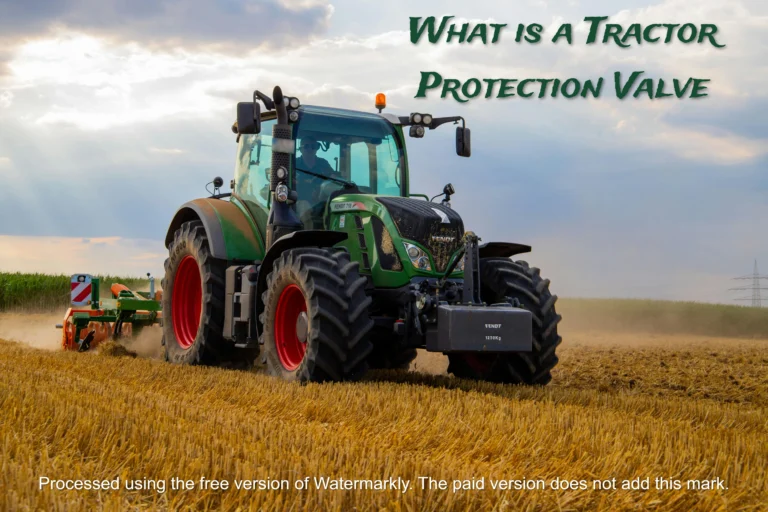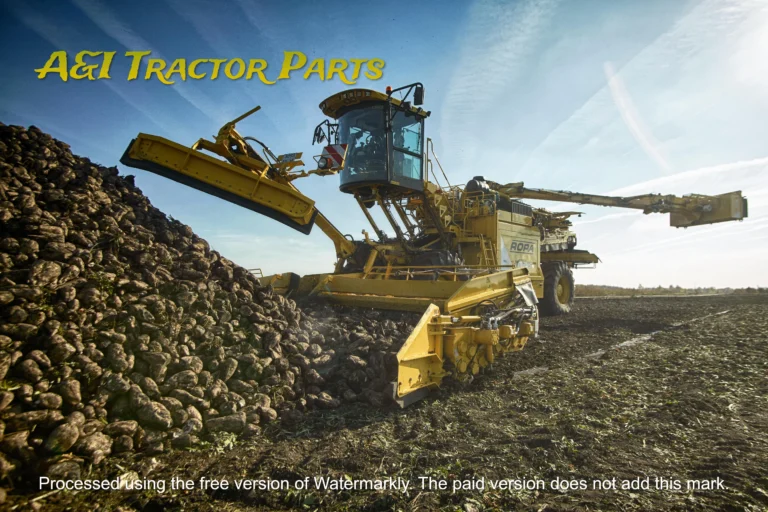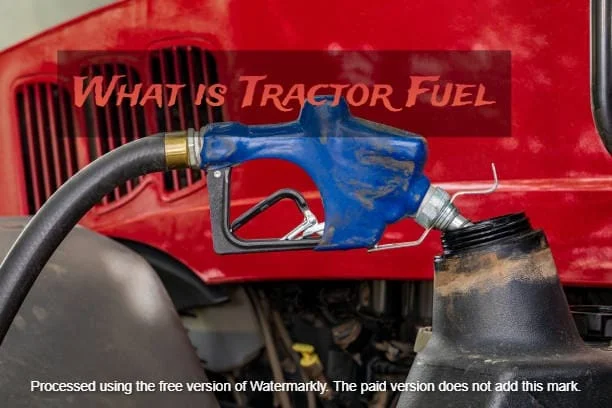US Farmers Use Both Tractors And Robot
US farmers are revolutionizing agriculture by combining traditional tractors with cutting-edge robotic technologies to harvest millions of pounds of fruits and vegetables. This integration of robotics and automation enhances productivity, improves crop quality, reduces labor costs, and promotes environmental sustainability in the farming industry.
Introduction
The agricultural industry has been a cornerstone of human civilization for centuries, providing sustenance and sustaining economies worldwide. However, as the world’s population continues to grow, the demand for food has skyrocketed, putting immense pressure on farmers to increase their productivity. In response, the agricultural sector has embraced technological advancements, revolutionizing the way crops are grown, harvested, and distributed.
One of the most significant developments in modern agriculture is the integration of robotics and automation into farming practices. Farmers in the United States, in particular, have been at the forefront of this technological revolution, utilizing both traditional tractors and cutting-edge robots to harvest millions of pounds of fruits and vegetables each year.
This article delves into the fascinating world of agricultural robotics, exploring how US farmers are combining traditional farming methods with state-of-the-art robotic technologies to enhance their crop yields, improve efficiency, and reduce labor costs. We will examine the various types of robots employed in the fields, their specific functions, and the benefits they offer to farmers and consumers alike.
US Farmers Use Both Tractors And Robot To Harvest Millions of Pounds of Fruits And Vegetables

Agricultural Robotics Farmers Use Both Tractors And Robot
The Rise of Precision Farming
Precision farming, also known as precision agriculture, is a modern farming management concept that relies on data analysis and technology to optimize crop yields while minimizing resource waste. This approach involves gathering and analyzing data from various sources, such as soil sensors, weather patterns, and crop performance, to make informed decisions about planting, irrigation, and pest management.
The advent of precision farming has paved the way for the integration of robotics and automation into agricultural practices. By leveraging advanced technologies, farmers can now monitor and manage their fields with unprecedented accuracy, allowing them to pinpoint areas that require attention and make data-driven decisions to optimize crop production.

The Role of Robotics in Agriculture
Robotics has played a pivotal role in transforming agriculture from a labor-intensive industry to a highly efficient and technologically advanced sector. Robots have been designed and deployed to perform a wide range of tasks, from planting and harvesting to monitoring and maintenance.
One of the primary advantages of agricultural robots is their ability to work tirelessly and with precision, reducing the need for manual labor and minimizing human error. Additionally, robots can operate in harsh environments and perform tasks that may be dangerous or physically demanding for human workers.
Types of Agricultural Robots
Autonomous Tractors and Harvesters
Autonomous tractors and harvesters are among the most advanced agricultural robots currently in use. These self-driving machines are equipped with advanced sensors, GPS systems, and computer algorithms that allow them to navigate fields and perform tasks with minimal human intervention.
Autonomous tractors are designed to plow, till, and prepare fields for planting, while autonomous harvesters are responsible for harvesting crops efficiently and accurately. These robots can operate 24 hours a day, significantly increasing productivity and reducing labor costs.

Robotic Fruit and Vegetable Pickers
One of the most challenging tasks in agriculture is the delicate process of harvesting fruits and vegetables. Traditional manual picking is labor-intensive, time-consuming, and prone to human error. Enter robotic fruit and vegetable pickers – specialized robots designed to harvest crops with precision and care.
These robots are equipped with advanced vision systems and machine learning algorithms that enable them to identify ripe produce and pick it without causing damage. Some robots even use soft robotic grippers or suction cups to gently pluck fruits and vegetables from their stems or vines.

Drone-Based Monitoring and Spraying Systems
Drones, or unmanned aerial vehicles (UAVs), have become invaluable tools in modern agriculture. Equipped with high-resolution cameras and sensors, drones can provide farmers with detailed aerial imagery and data about their fields, allowing them to monitor crop growth, detect pests and diseases, and assess soil conditions.
Additionally, drones can be outfitted with spraying systems, enabling precise and targeted application of pesticides, fertilizers, and other agricultural inputs. This not only reduces the amount of chemicals used but also minimizes environmental impact and worker exposure to harmful substances.
Robotic Weeders and Thinners
Weeding and thinning crops are labor-intensive tasks that traditionally require a significant amount of manual labor. However, robotic weeders and thinners have emerged as efficient solutions to this age-old problem.
These robots use advanced computer vision and machine learning algorithms to identify and remove unwanted weeds or thin out overcrowded crop rows. Some robots even employ micro-dosing techniques to apply targeted herbicides or mechanical tools to eliminate weeds, reducing the need for blanket spraying and minimizing chemical usage.
Benefits of Agricultural Robotics
Increased Productivity and Efficiency
One of the most significant benefits of agricultural robotics is the ability to increase productivity and efficiency. Robots can work around the clock, reducing the need for human labor and minimizing downtime. Additionally, robots can perform tasks with greater precision and consistency, leading to higher crop yields and reduced waste.
Improved Crop Quality and Food Safety
Robotic systems in agriculture can help improve crop quality and food safety by minimizing human handling and reducing the risk of contamination. Robots can also be programmed to identify and remove damaged or diseased produce, ensuring that only high-quality fruits and vegetables reach consumers.

Labor Cost Reduction
The agricultural industry has long struggled with labor shortages and rising labor costs. The implementation of robotics can help alleviate these challenges by reducing the need for manual labor and minimizing labor expenses. This can result in significant cost savings for farmers and potentially lower food prices for consumers.
Environmental Sustainability
Agricultural robotics can contribute to environmental sustainability by enabling precise and targeted application of inputs such as fertilizers, pesticides, and water. This not only reduces waste and minimizes the negative impact on the environment but also helps farmers conserve valuable resources.
Improved Worker Safety
Certain agricultural tasks, such as spraying pesticides or working in hazardous environments, can pose risks to human workers. By employing robots to perform these tasks, farmers can improve worker safety and reduce the risk of injuries or exposure to harmful substances.
Challenges and Considerations
Despite the numerous benefits of agricultural robotics, there are several challenges and considerations that must be addressed:
Initial Investment Costs
The implementation of robotic systems in agriculture can be costly, especially for smaller farms or operations with limited resources. The initial investment in hardware, software, and infrastructure can be significant, potentially creating a barrier to entry for some farmers.
Technical Expertise and Training
Operating and maintaining advanced robotic systems requires specialized technical expertise and training. Farmers and their employees may need to undergo comprehensive training programs to effectively utilize and maintain these technologies.
Interoperability and Data Integration
Agricultural robotics often involves the integration of multiple systems and technologies, such as sensors, drones, and autonomous vehicles. Ensuring interoperability and seamless data integration among these systems can be a challenge, requiring robust data management practices and standardized protocols.
Regulatory and Legal Considerations
The use of agricultural robots may be subject to various regulations and legal considerations, particularly regarding autonomous operation, data privacy, and liability. Navigating these complexities and ensuring compliance can be a significant undertaking for farmers and technology providers.
Ethical Concerns
The increasing reliance on robotics and automation in agriculture raises ethical concerns regarding job displacement and the potential impact on rural communities. It is crucial to address these concerns and develop strategies to mitigate potential negative consequences.
Case Studies
Robotic Strawberry Picking in California
In California, one of the leading strawberry-producing regions in the United States, farmers have embraced robotic technology to address labor shortages and improve efficiency in strawberry picking.
Companies like Advanced Farm Technologies have developed robots capable of identifying and picking ripe strawberries with precision and care. These robots use advanced computer vision and machine learning algorithms to navigate strawberry fields and selectively harvest only the ripe berries, leaving the unripe ones to continue developing.
The implementation of robotic strawberry pickers has not only increased productivity and yield but has also reduced labor costs and minimized waste. Additionally, by reducing the need for manual labor, these robots have helped alleviate the strain on the agricultural workforce during peak harvest seasons.
Autonomous Lettuce Thinners in Arizona
In Arizona, where lettuce is a major crop, farmers have turned to autonomous robotic thinners to streamline the labor-intensive process of thinning lettuce seedlings.
Companies like Abundant Robotics have developed autonomous robots that can navigate lettuce fields and use computer vision to identify and remove excess seedlings, leaving the optimal spacing for healthy plant growth. These robots can operate continuously, significantly reducing the time and labor required for this task.
The use of autonomous lettuce thinners has not only improved efficiency but has also resulted in higher crop yields and quality. By thinning the seedlings with precision, the remaining plants have access to adequate resources, leading to improved growth and better-quality lettuce heads.
Drone-Based Monitoring and Spraying in the Midwest
In the Midwestern United States, where vast fields of corn, soybeans, and other crops dominate the landscape, farmers have embraced drone technology for monitoring and precision spraying applications.
Adoption and Future Outlook
The integration of robotics and automation in agriculture is rapidly gaining momentum, with an increasing number of farmers recognizing the potential benefits these technologies offer. However, the adoption rate varies across regions and farm sizes, with larger commercial operations often leading the way in implementing advanced robotic systems.
As the demand for food continues to rise, and the challenges posed by labor shortages, climate change, and resource constraints intensify, the role of agricultural robotics is expected to become even more crucial. Governments, research institutions, and private companies are investing heavily in the development and refinement of these technologies, with a focus on improving efficiency, sustainability, and productivity.
One area of particular interest is the development of swarm robotics, which involves the coordination and collaboration of multiple robots working together to perform complex tasks. This approach has the potential to revolutionize various aspects of agriculture, from precision planting and harvesting to targeted pest control and irrigation management.
Moreover, the integration of advanced technologies such as artificial intelligence (AI), machine learning, and the Internet of Things (IoT) with agricultural robotics is expected to further enhance their capabilities. AI and machine learning algorithms can help robots make more informed decisions, adapt to changing conditions, and optimize their performance based on real-time data analysis.
IoT technologies, on the other hand, enable seamless connectivity and data exchange between various components of the agricultural ecosystem, including robots, sensors, and management systems. This interconnectivity facilitates efficient decision-making, proactive maintenance, and remote monitoring, ultimately improving overall operational efficiency.
Despite the promising outlook, challenges such as high initial costs, regulatory hurdles, and concerns over job displacement must be addressed to ensure a smooth and equitable transition to robotics-driven agriculture. Collaborative efforts among farmers, technology providers, policymakers, and stakeholders are essential to develop comprehensive strategies that balance technological advancements with social and economic considerations.
Conclusion
The integration of robotics and automation in agriculture has ushered in a new era of precision, efficiency, and sustainability for the US farming industry. By combining traditional farming practices with cutting-edge robotic technologies, farmers are able to harvest millions of pounds of fruits and vegetables while addressing labor shortages, reducing costs, and minimizing environmental impact.
From autonomous tractors and harvesters to robotic fruit and vegetable pickers and drone-based monitoring systems, agricultural robots have proven their worth in enhancing productivity, improving crop quality, and promoting environmental sustainability. The case studies presented in this article highlight the real-world applications and benefits of these technologies in various regions of the United States.
However, the adoption of agricultural robotics is not without its challenges. Initial investment costs, technical expertise requirements, data integration issues, and regulatory considerations must be addressed to ensure a smooth transition and widespread adoption.
As we look towards the future, the role of robotics in agriculture is poised to become even more significant. The development of swarm robotics, the integration of AI and machine learning, and the proliferation of IoT technologies are expected to further revolutionize the industry, enabling more efficient and sustainable farming practices.
While concerns over job displacement and the impact on rural communities must be addressed, the potential benefits of agricultural robotics in ensuring food security, reducing resource waste, and mitigating the effects of climate change cannot be overlooked.
Ultimately, the successful integration of robotics and automation in agriculture will require a collaborative effort among farmers, technology providers, policymakers, and stakeholders. By fostering an environment that supports innovation, addresses challenges, and prioritizes sustainability, the US farming industry can continue to lead the way in leveraging cutting-edge technologies to meet the growing global demand for food.
FAQs
- What are the main types of agricultural robots used by US farmers?
The main types of agricultural robots used by US farmers include autonomous tractors and harvesters, robotic fruit and vegetable pickers, drone-based monitoring and spraying systems, and robotic weeders and thinners. - How do robotic fruit and vegetable pickers work?
Robotic fruit and vegetable pickers are equipped with advanced vision systems and machine learning algorithms that enable them to identify ripe produce and pick it without causing damage. Some robots use soft robotic grippers or suction cups to gently pluck fruits and vegetables from their stems or vines. - What are the benefits of using agricultural robots?
The benefits of using agricultural robots include increased productivity and efficiency, improved crop quality and food safety, labor cost reduction, environmental sustainability, and improved worker safety. - What are some of the challenges associated with the adoption of agricultural robotics?
Some of the challenges associated with the adoption of agricultural robotics include high initial investment costs, the need for technical expertise and training, interoperability and data integration issues, regulatory and legal considerations, and ethical concerns over job displacement. - How is the future of agricultural robotics expected to evolve?
The future of agricultural robotics is expected to involve the development of swarm robotics, where multiple robots collaborate to perform complex tasks. Additionally, the integration of advanced technologies like AI, machine learning, and IoT will further enhance the capabilities of agricultural robots, enabling more efficient and sustainable farming practices.
https://tractortrend.com/?p=738






